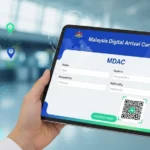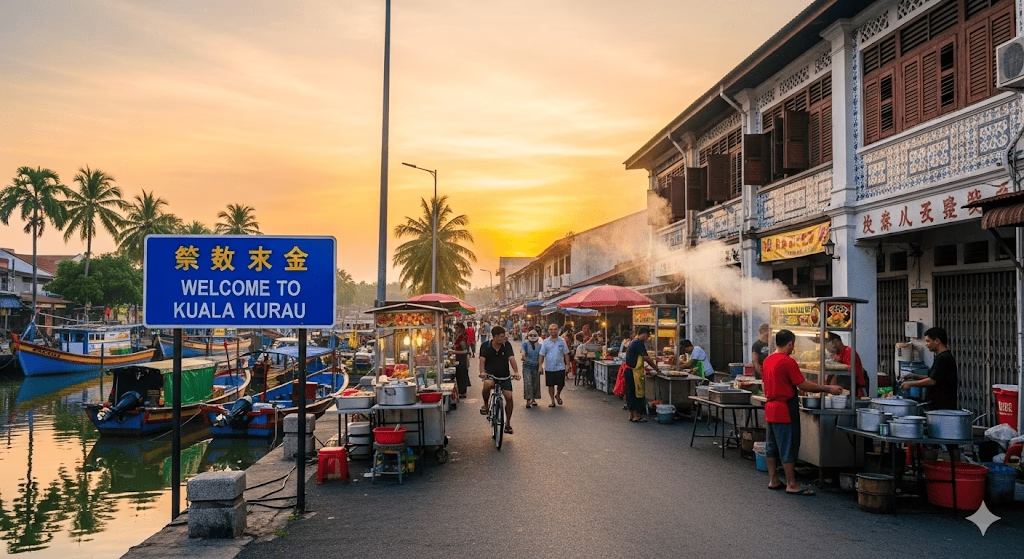How to Reach Malaysia’s Hidden Waterfalls

Malaysia’s tropical landscape hides countless majestic waterfalls, many of which remain untouched by mass tourism. From dense rainforest cascades to multi-tiered river falls, these hidden gems offer not just breathtaking beauty but also the thrill of adventure. But reaching them often means venturing beyond city limits—through jungle paths, river crossings, and sometimes even boat journeys.
This guide simplifies everything you need to know about accessing Malaysia’s hidden waterfalls, from travel logistics to gear essentials—all while helping you travel smarter and safer.
Choosing the Right Waterfall
Not all waterfalls are created equal—some are easily accessible, while others demand effort and stamina. Your choice depends on your travel goals, fitness level, and interest in hiking or exploration.
| Waterfall | Location | Accessibility | Unique Feature |
|---|---|---|---|
| Sungai Gabai | Selangor | Car + Short Walk | Family-friendly with stairs |
| Kanching Falls | Selangor | Car + Jungle Trail | 7-tier waterfall, good for day hikes |
| Lata Medang | Selangor | Car + Moderate Trek | Scenic rainforest route |
| Belum-Temengor Falls | Perak | Flight + Boat + Jungle Hike | Remote, pristine, eco-tour destination |
| Sungai Chiling | Selangor | Car + River Crossings | Adventure-style hike, regulated access |
Getting There: Transport Options
Reaching hidden waterfalls often requires multiple forms of transport. Here’s how to navigate the journey efficiently.
| Mode | Best For | Note |
|---|---|---|
| Car Rental | Most waterfalls within Peninsular Malaysia | Offers flexibility and time control |
| Public Transport | Budget travelers visiting urban-accessible falls | Often limited to nearby towns—last mile requires a taxi or Grab |
| Flight | Remote regions like Belum, Borneo | Combine with ground or river transport |
| Boat | Rainforest locations (e.g., Temengor, Taman Negara) | Usually arranged through eco-lodges or guides |
Travel Tip: Plan early morning departures. Most trails are safer and more enjoyable before afternoon rain sets in.
Trail Experience: What to Expect
The journey to these waterfalls can range from paved steps to dense, muddy jungle treks. Preparation matters.
Common Terrain Features:
- Steps and stone paths (e.g. Sungai Gabai)
- Jungle trails and bamboo forests (e.g. Kanching, Lata Medang)
- River crossings and water wading (e.g. Sungai Chiling)
- Remote forest hikes (e.g. Belum Rainforest)
Essentials to Bring:
- Hiking shoes with grip
- Insect repellent & sunscreen
- Dry bag for electronics
- First aid kit
- Snacks and 1.5L+ water
- Lightweight rain poncho
Traveler Tip: Wear leech socks in damp jungle areas—especially during the wet season.
To Guide or Not to Guide?
While many trails are safe for independent travelers, others are better tackled with local guides, especially in remote areas.
| When to Hire a Guide | Why |
|---|---|
| Remote jungle locations | Navigation support, safety, and wildlife knowledge |
| Multi-day treks or boat trips | Helps arrange permits, food, and logistics |
| Regulated parks (e.g., Chiling Falls) | Access often requires ranger or timed entry |
| First-time jungle trekkers | Ensures smoother experience and cultural insight |
Traveler Tip: Group tours can help split costs and offer a safer, more social experience.
Flying In
Flying can be efficient when heading to remote states like Perak, Kelantan, or Sabah. But it comes with trade-offs.
Downsides of Flying:
- No direct flights to waterfalls
- Luggage limitations for hiking gear
- Additional cost for land transfers
- Flight delays affect itinerary
- Carbon footprint
How to Make It Work:
- Fly to the nearest regional airport (e.g., Ipoh, Kota Bharu, Alor Setar)
- Book car/van transfers in advance
- Choose early flights to maximize daylight
- Pack light and smart—carry foldable, multipurpose gear
Responsible Adventure: Safety and Sustainability
Venturing into nature means respecting it—and protecting yourself while doing so.
Safety Reminders:
- Let someone know your hiking plan
- Don’t hike alone in remote areas
- Watch for wildlife (monkeys, snakes, dogs)
- Avoid river crossings after rain (risk of flash floods)
- Bring power banks and offline maps
Eco-Friendly Habits:
- Stick to trails
- Carry trash out with you
- Don’t feed wildlife
- Avoid loud noise or music in nature
Traveler Tip: Waterfalls are at their best after light rain—but avoid heavy rainfall days to reduce risk of landslides or slippery paths.
Final Thought
Malaysia’s hidden waterfalls reward those who seek them—not just with cascading waters and cool natural pools, but with the feeling of discovery, solitude, and serenity. Whether you drive, trek, or glide in by boat, the journey is just as enriching as the destination itself.
With proper planning, a sense of adventure, and respect for nature, you can experience some of Southeast Asia’s most awe-inspiring natural escapes.
Frequently Asked Questions (FAQ)
1. Do I need a permit to visit hidden waterfalls in Malaysia?
Not always. Some waterfalls like Sungai Chiling or those in protected rainforest reserves (e.g., Belum-Temengor, Taman Negara) may require permits or ranger approval. Always check ahead with the park authority or local tourism office.
2. Are Malaysia’s hidden waterfalls safe to visit alone?
Solo travel is possible for well-known and accessible waterfalls, but it’s not advisable for remote jungle trails. If you’re unfamiliar with the terrain, hire a local guide or join a small group tour for safety and ease.
3. What’s the best time of year to visit these waterfalls?
The dry season (March to October) is ideal, with clearer trails and safer river crossings. The monsoon season (November to February) can cause slippery paths and dangerous flash floods, especially in jungle areas.
4. Can I swim in the waterfall pools?
Yes, swimming is allowed in most locations unless specifically restricted by signage. Just be cautious of strong currents, deep drop-offs, and submerged rocks. Always swim with a buddy if you’re unsure.
5. What’s the minimum fitness level required?
It depends on the location. Some falls like Sungai Gabai or Jeram Toi require only short walks, while others like Lata Medang or Belum rainforest waterfalls involve moderate to strenuous hikes. Read up on trail difficulty before deciding.















Comments are closed.